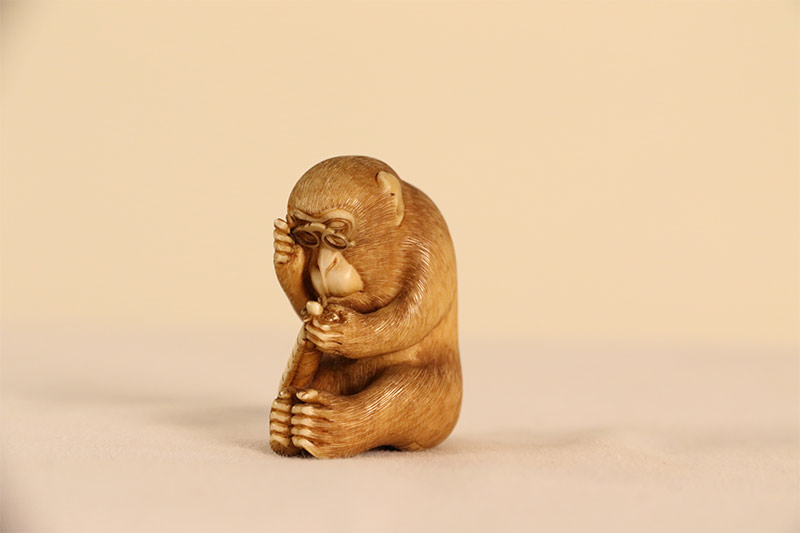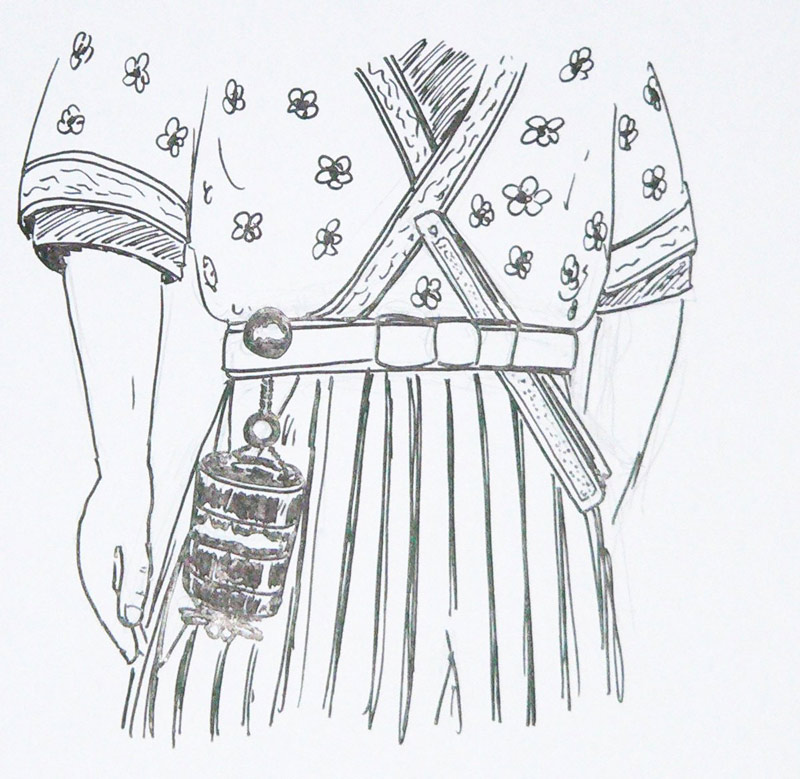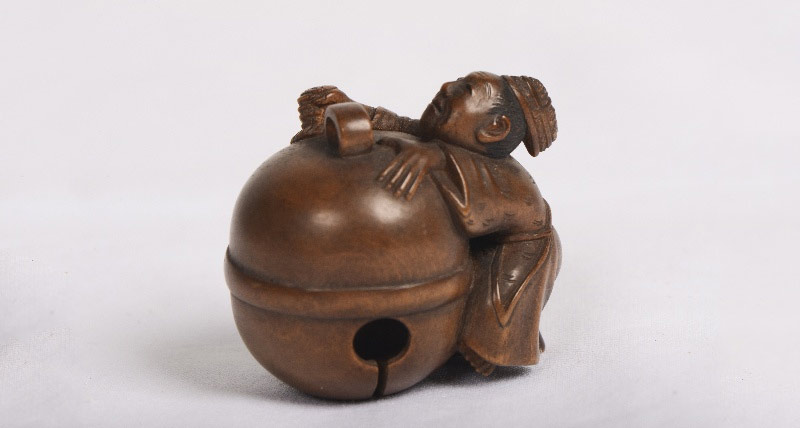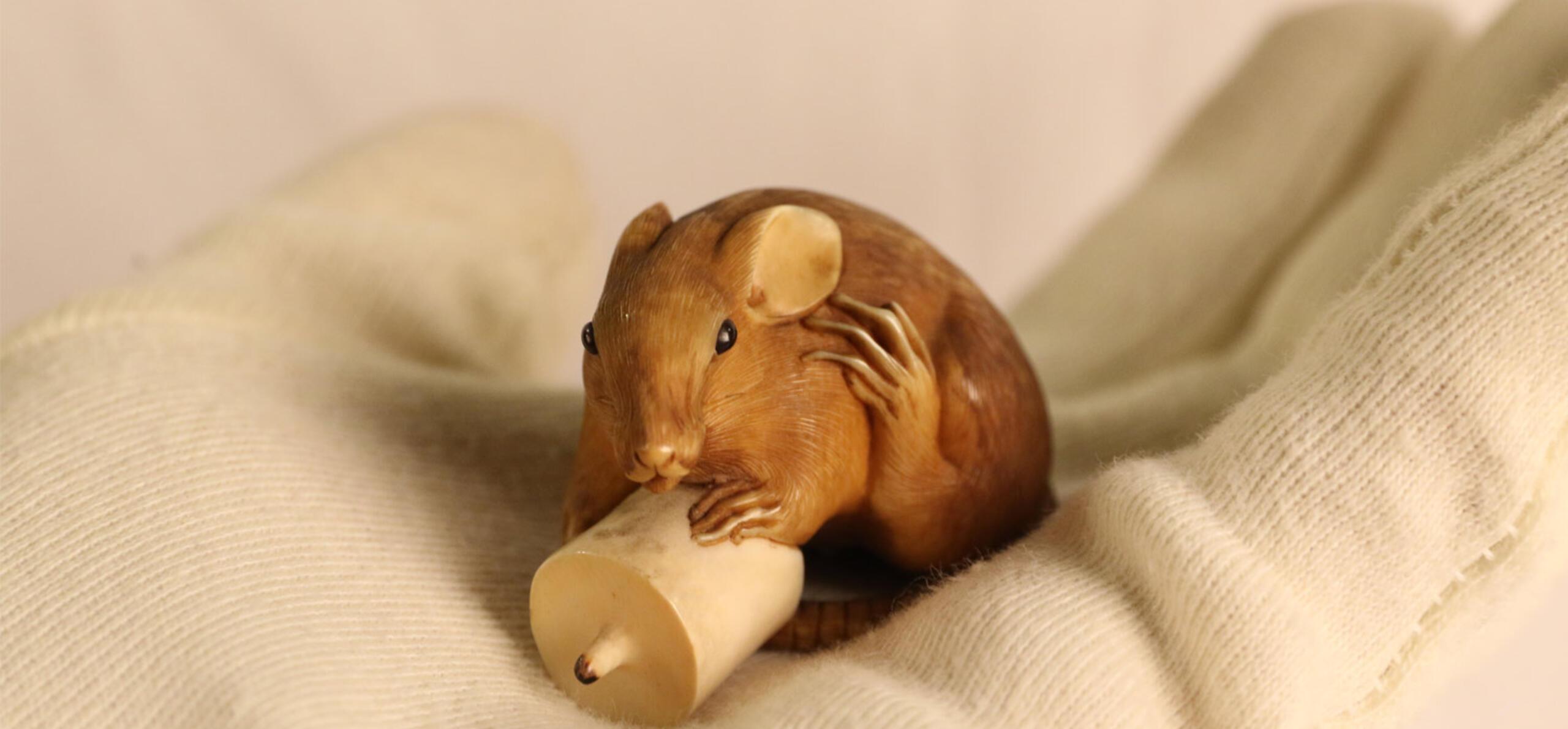Written by our volunteer Kirstin, as part of her #RMDiscoveries series
After discussing an upcoming exhibition to be held at Reading Museum on the theme of animals, I made a charming discovery of the netsuke kind within our very own collections.

Netsuke monkey, 19th Century. REDMG: 1926.99.18.
Netsuke (根付 meaning “root” and “attached”) are small sculptures which were worn on traditional Japanese male garments, such as the kimono. Their primary function was to act as a fastener for a small pouch (sagemono) which contained possessions. The sagemono were hung from the kimonos sash (obi) and the netsuke would act as a counterweight to keep the items securely in place.

By Rama - Own work, CC BY-SA 2.0 fr, https://commons.wikimedia.org/w/index.php?curid=443635
The netsuke can take any form so long as they follow 3 requirements: they must be small, have a hole for the hanging cord, and are smooth so no snagging can occur on the garment. These basic rules allowed for plenty of creative freedom for Japanese carvers - each creator could inject their own personality and style into each netsuke. Netsuke were typically made from ivory or hardwoods, but less common materials such as antlers and ceramics were also used.
Designs were incredibly varied and often reflected the nature of the society at the time. Common themes included religious subjects, the animals of the zodiac and literary figures - to name but a few. But they could also be of a more rebellious nature and depict social satire of erotic nature.

Japanese netsuke, 19th Century. REDMG: 1926.99.21 http://collections.readingmuseum.org.uk/index.asp?page=record&mwsquery=({search}=*{netsuke})&filename=REDMG&hitsStart=6
When Japanese trade was opened up to the West in 1853 (after some gunboat diplomacy), the netsuke become incredibly popular with collectors. One such collector was Ambrose Petrocokino.
Ambrose (1865-1926) lived in Pangbourne and Reading. An avid adventurer, Ambrose travelled the world and fought in numerous wars; he volunteered in the Greco-Turkish war and the Boer War, and was a Lieutenant during World War I. He retired in 1917 partway through WWI as he had reached the maximum age limit. In 1920, he published Cashmere: Three Weeks in a Houseboat, which is still available to this day. The book was based on his experience in Kashmir (the northernmost geographical region of the Indian subcontinent) and is widely recognised by scholars for its cultural importance.
It is theorised that Ambrose encountered the beauty of the netsuke on his worldly travels, and his collection of the sculptures are now housed in the collections at Reading Museum. Whilst the netsuke can be seen at any time via our online collections, there will be an upcoming exhibition in September which will feature some of the charming netsuke sculptures collected by Ambrose Petrocokino.





